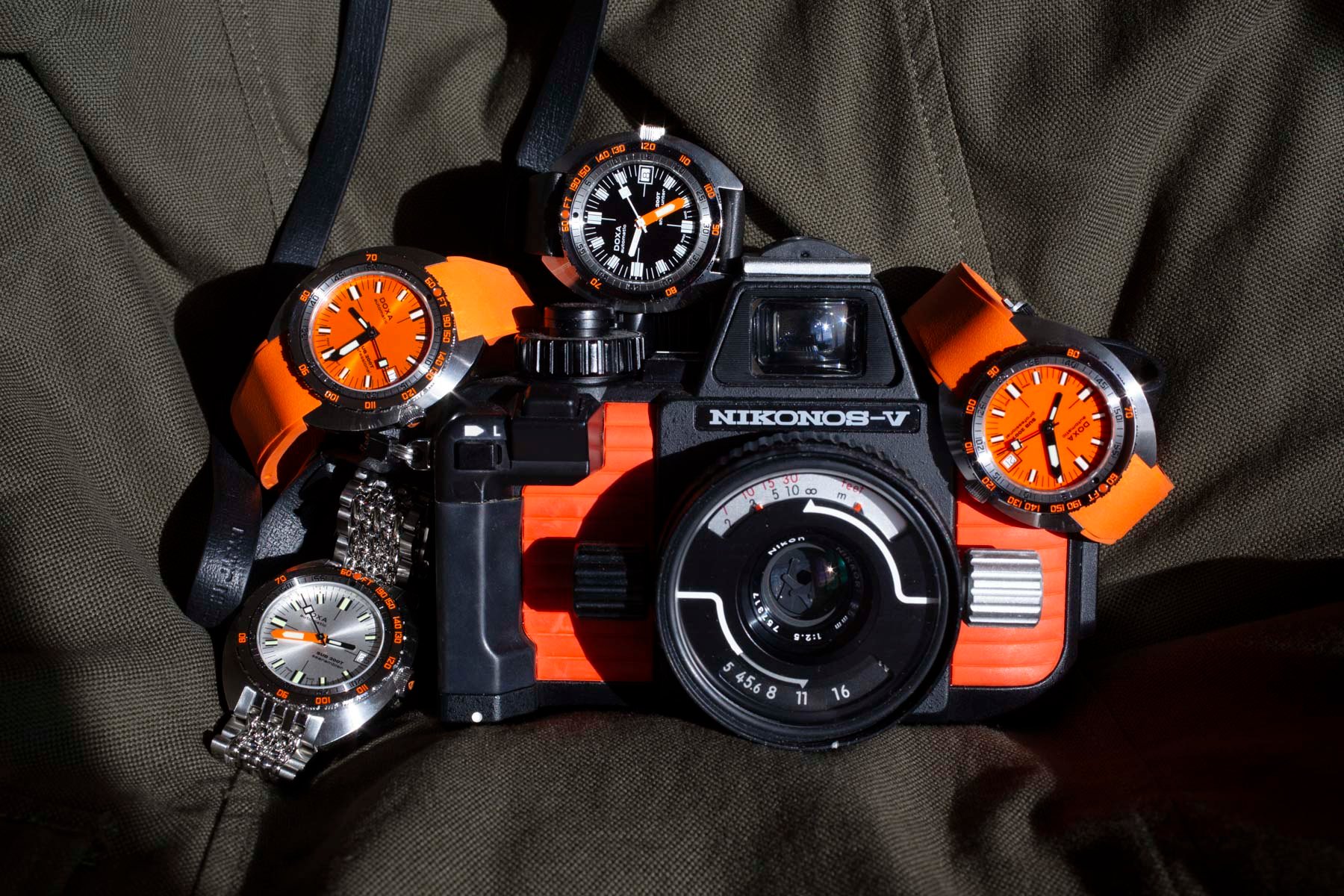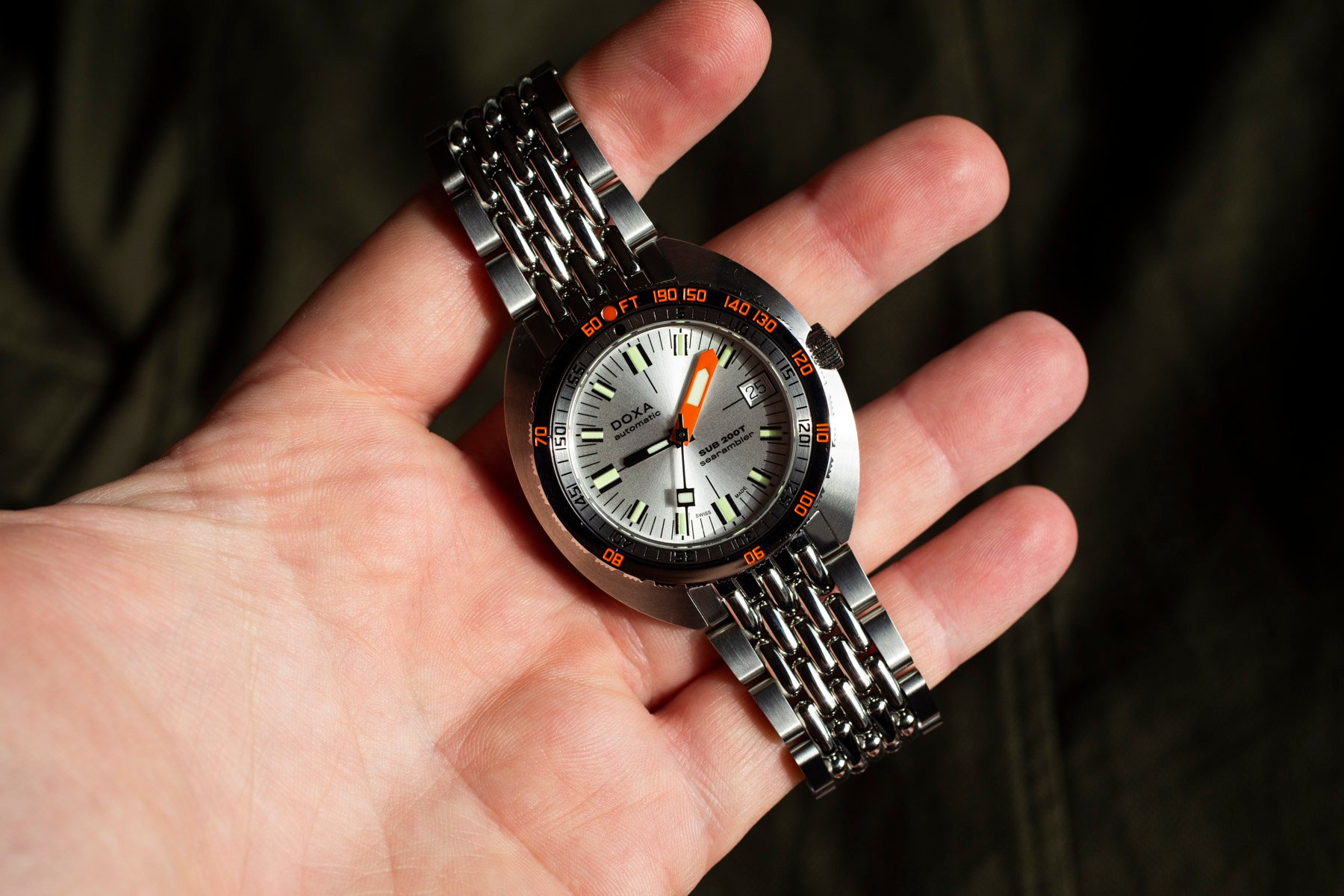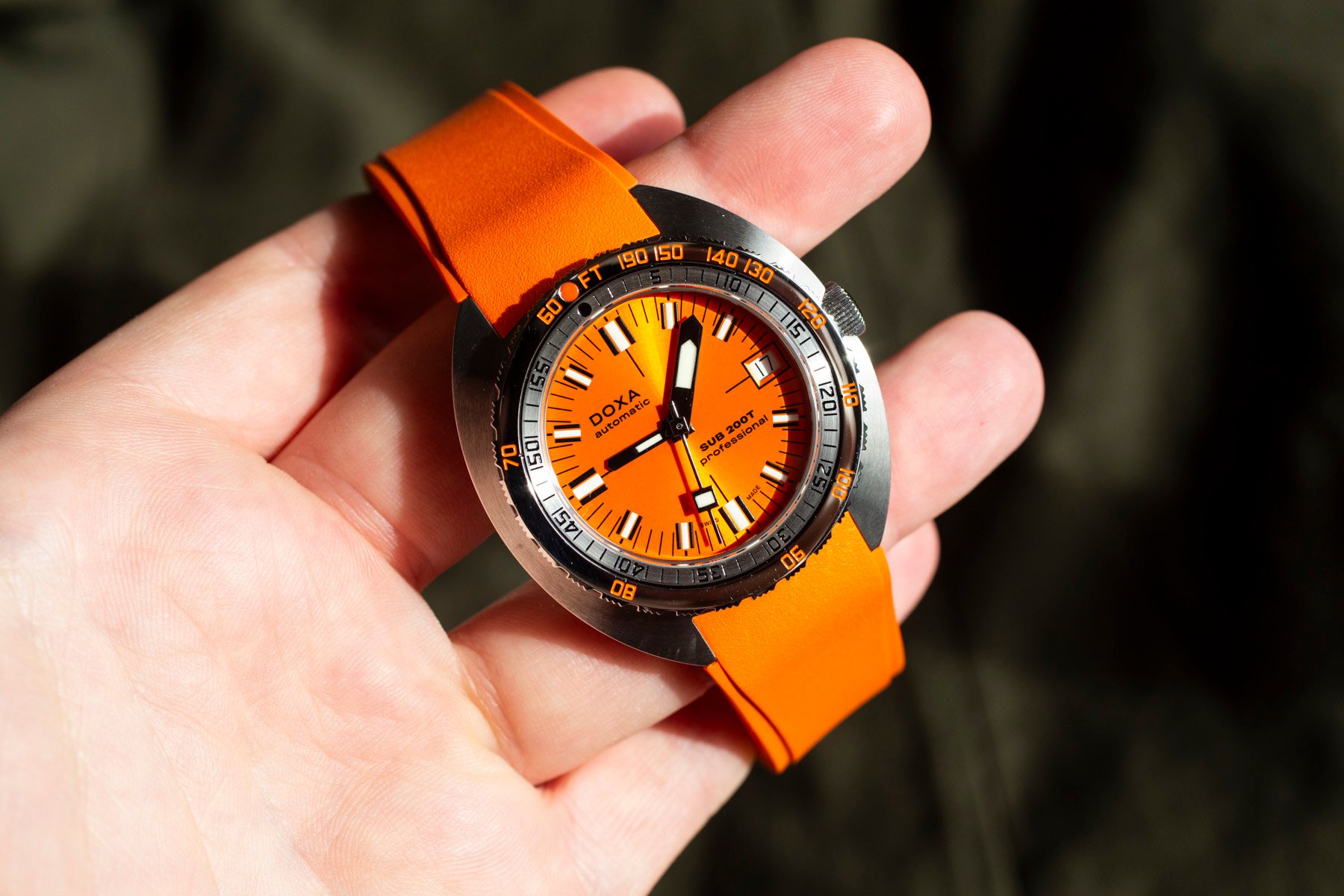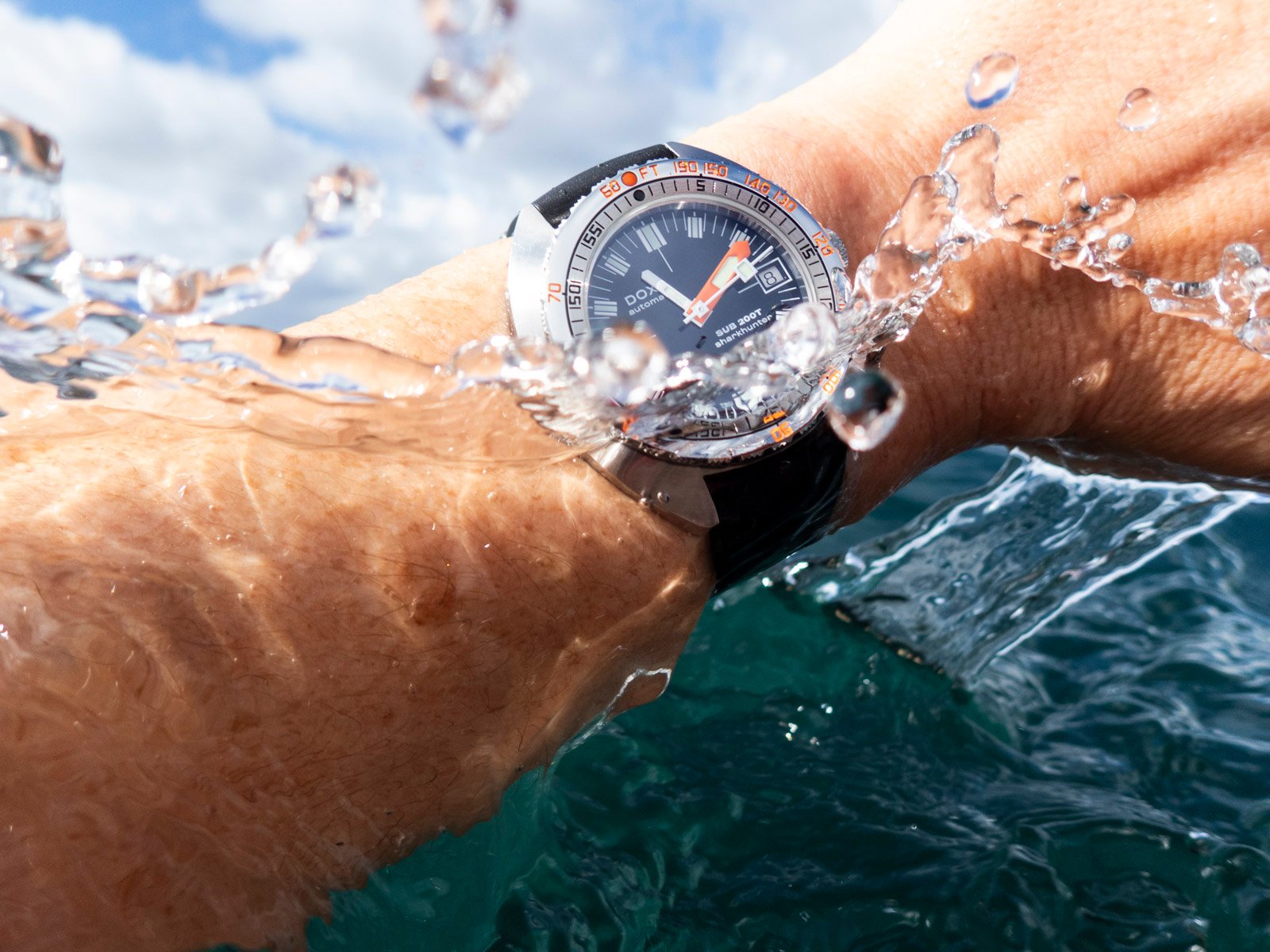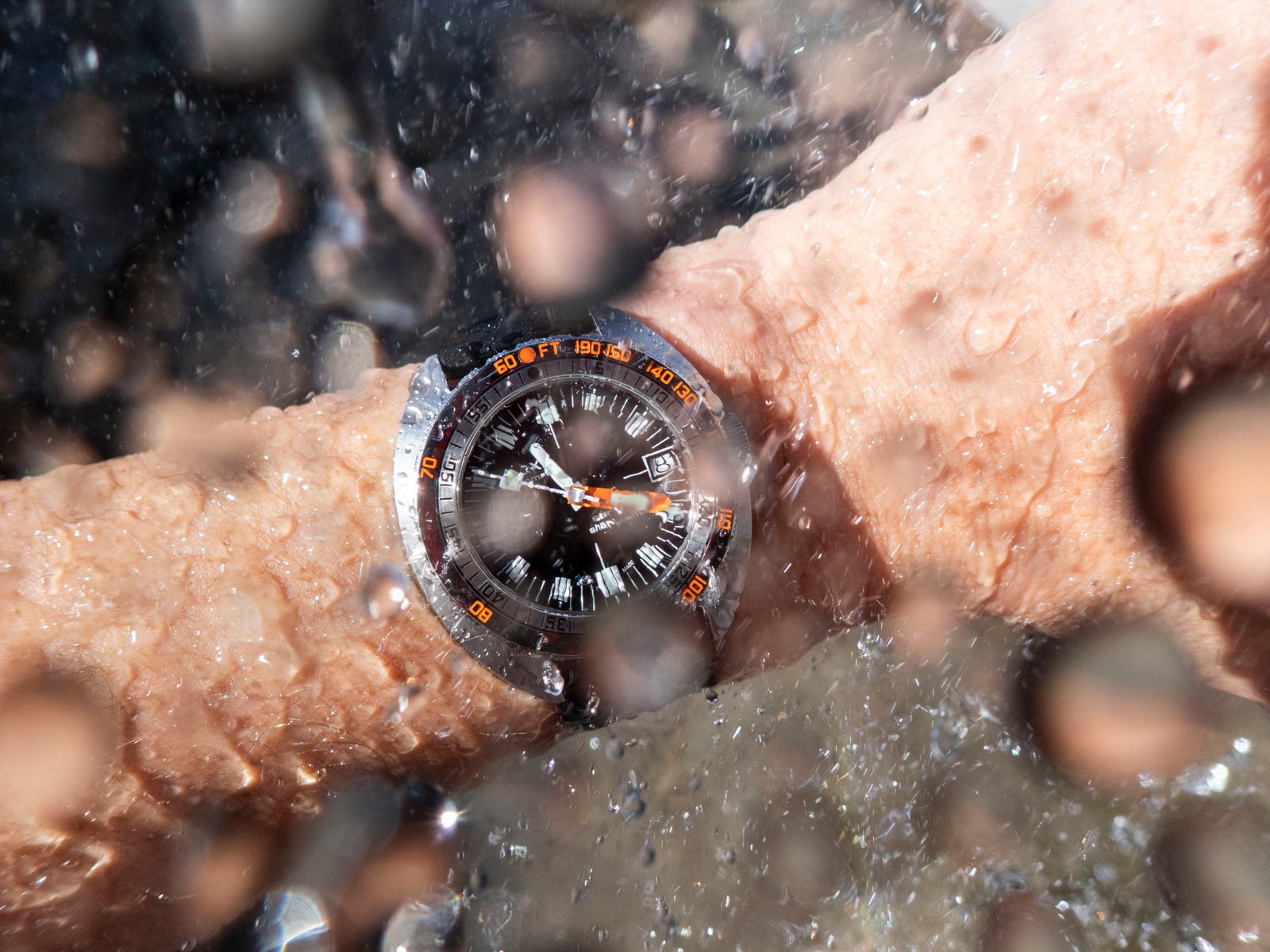Testing The Doxa Sub 200T In Its Natural Underwater Habitat
Doxa’s Sub 200T is a wonderful underwater companion and underlines the trend toward smaller tool watches. Having debuted just before the start of Watches and Wonders 2024, the Sub 200T was met with broadly positive acclaim. As a truly mid-sized option with a 39mm case diameter and slim profile, it rounds out Doxa’s cushion-cased offerings quite nicely.
Doxa dive watches have always worn well thanks to short lug-to-lug distances. It’s a bit of a design hack that makes a bigger watch fit on all kinds of wrist sizes. As an owner of the regular Sub 300, I can attest to this. The 42mm case sits well on my 16cm wrist thanks to the 45mm lug-to-lug.
The Doxa Sub 200T fills a gap in the brand’s collection
Even so, for a heritage-focused watch brand like Doxa, a mid-sized offering was missing. This is something my colleague Thomas also noted. The Sub 300T offers classic aesthetics but with beefed-up capabilities, including a helium release valve, much like the vintage Doxa Sub 300T Conquistador, which was a beefed-up version of the original Sub 300.
Doxa’s Sub 300, meanwhile, offers something for the vintage nuts. The smaller dial aperture and thinner case profile create an incredibly appealing package for those interested in the original vintage version that debuted in 1967. The Sub 300 plays a solid role as the brand linchpin and houses a COSC-certified movement.
Doxa Sub 200T ancestors
So, Doxa had the burly Sub 300T and the more elegant 300 but was still missing a sub-40mm Sub. If there were ever a time to introduce a smaller version, now seems an opportune moment. Yes, smaller tool watches are in vogue. This was surely a factor. Anyone interested in this trend toward smaller tool watches need only consider Tudor’s 37mm Black Bay 54 as one of the trendsetters, though this pattern predated the 54 (e.g. the Black Bay 58 and the return of the Rolex 36mm Explorer, to name just a few examples).
But Doxa’s new Sub 200T is not an entirely new concept. A smaller Sub series existed in the brand’s golden era of the 1960s and ’70s. Examples survive of what were, in essence, Sub 300Ts shrunken down to a 35mm size. These were also called the Sub 200. Doxa used to advertise these as women’s watches. These could be seen in old Doxa advertisements. They were small, mechanical watches that retailed for a little more than their full-sized counterparts.
Doxa expert Dr. Peter Millar’s website, which is full of the brand’s history, has photographs of several examples. These include a black-dial Seamaid, orange-dial Coraline, and silver-dial Nymph. Therefore, Doxa’s decision to relaunch the old Sub 200 in a 39mm “T” format was a return to form.
The modern watch for modern tastes
Let’s return to the Doxa Sub 200T released earlier this year. We get a 200m-water-resistant case with a screw-down crown, iconic no-deco bezel, and tons of color options. Without going too much into the specifications here (we have thoroughly covered those on Fratello before), it is worth noting that these watches provide a slender 10.7mm thickness and a 41.5mm lug-to-lug length. It is these dimensions that have the most significant impact on a watch’s fit and wearing experience.
It is no surprise, for example, that many out there appreciate the form factor and ergonomics of neo-vintage Omegas. Taking a look at Nacho’s ref. 2254.50 (12mm thick), we see attractive features but in a relatively thin offering. This was in no small part thanks to the use of a modified ETA 2892 caliber, a slim movement.
Doxa quietly updated the bracelet
Those who know Doxa’s modern offerings well will probably be familiar with the following gripes about the bracelets. While the beads-of-rice metal bracelets from both the Doxa Sub 300 and 300T are comfortable, they do have some issues. Starting with the Sub 300, the clasp truly has a vintage character, being what looks like stamped metal with some micro-adjustment holes. It’s a clasp that belongs in the 1960s and doesn’t feel adequate.
The Doxa Sub 300T, on the other hand, has a far superior clasp with a modern diver’s extension. But the bracelet flares out where it meets the case and doesn’t have much articulation in the end links. This means if you have smaller wrists, it becomes hardly wearable. Thankfully, Doxa’s new Sub 200T solves both of these problems. The clasp is similar to that of the Sub 300T, and the end links have full articulation so that they can sit underneath the case. This is a big win for anyone planning on using the beads-of-rice bracelet.
Adding some bling
I planned on taking these Doxa Sub 200Ts into the Pacific Ocean. As soon as I pulled them out of the box they arrived in, I noticed how striking the new sunray finish is on the Professional colorway. I hope you can see the difference between the matte and sunray finishes in the images below.
What I also wanted to showcase was how compact these Doxa Sub 200Ts are, even in comparison to their vintage forefathers. I paired a black Sharkhunter and a silver Searambler with original Sub 300s from the late 1960s in two of the images above. As you can see, these watches are very compact indeed! However, another thing you may notice is how similar the dial apertures are.
Getting the Doxa Sub 200T wet
It had been a rough period of weather here in Australia. Regular storms and what seemed like endless rain battered the country’s eastern coast. This made it difficult to get out and photograph the Doxa Sub 200T in its natural aquatic environment. I wanted to see how this design would compare to its larger siblings in the water and to focus primarily on three things — ergonomics, comfort, and legibility.
All three of these factors are altered in the ocean, as any regular wearer of wristwatches in seawater will agree. The abrasive effect of the ocean can make what is a comfortable watch on dry land not nearly as enjoyable to wear in the ocean. A watch you might consider to have great ergonomics above water feels top heavy or clumsy beneath the waves. Similarly, a watch that is legible above the sea can be hard as heck to read under it, even at depths of just a few meters.
Ergonomics, comfort, and legibility
Let’s start with the ergonomics. I also had a Doxa Sub 300T and my Sub 300 for comparison. The first thing I noticed is just how slim the Sub 200T is. The combination of a relatively thin bezel and case (unlike the Sub 300T) and the flat crystal (unlike the bulbous one on the Sub 300) makes for a fantastic ergonomic experience underwater. As I was jumping in the ocean and navigating my way underwater in choppy conditions, I had no concerns that I’d somehow bang this Doxa against a rock. This is in contrast to the Sub 200T’s thicker or chunkier bigger brothers.
The factors noted above also greatly aided the comfort. The compact lug-to-lug and the thin case made for something that just seemed to meld to my wrist. When it came to legibility, I found that the Doxa Sub 200T does not sacrifice much compared to the Sub 300T. I even found it easier to read at a glance than the Sub 300 thanks to the flat crystal. All in all, the Doxa Sub 200T excels (for me) over its bigger brothers in all three categories.
Closing thoughts
Doxa has created a hit. Just today, my partner was admiring the orange Doxa Sub 200T Professional. Perhaps the best thing about this new release is that it truly opens Doxa up to new markets and creates a less intimidating offering for men and women alike. To me, that sounds like a great recipe for gaining new fans.
But what do you think, Fratelli? Would you wear one of these Doxa Sub 200T models, or would you still prefer the larger Sub 300 or Sub 300T? Let me know in the comments.

